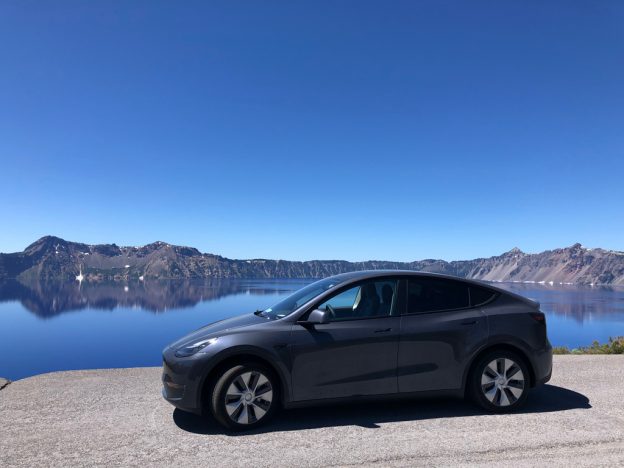July 2020. California.
Last week we took our Model Y on a short road trip to visit Crater Lake National Park in Oregon. Crater Lake is 350 miles from our town, not very far, but it was a long enough drive to get a feel for what it’s like taking the Model Y on road trips.
Brief word on Crater Lake: It formed over 7000 years ago from the massive eruption and subsequent collapse of what had been a 12,000 ft high volcano, Mt. Mazama. The rim of the crater has peaks over 8,000 feet. The lake is filled by rain and snow melt – over 40 feet of snow per year – and has no outlets. Crater Lake is the deepest lake in the United States at 1,945 feet.

Storage Space in the Model Y. We’ve had a Model 3 for two and a half years now, so we’re familiar with the interior and general layout of the car, but this was the first time we took advantage of the extra storage space in the Y. This was a 6 day trip, so we packed the clothing, food, snacks, and drinks we’d need for our family of four.
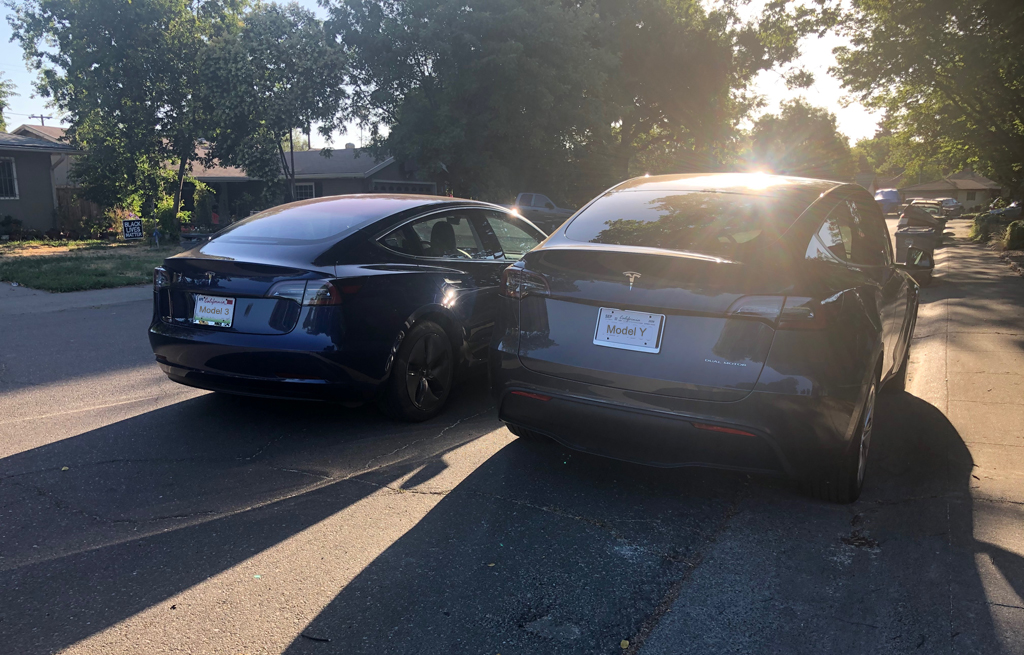
We stayed in a cabin at Mazama Village in the park. Rooms are pretty basic: two beds, a bathroom with a shower, and a clock radio. No TV, which was perfect since we went there to get outdoors. And no microwave. The Annie Creek Restaurant in Mazama Village was open for business, but we’re not ready for indoor dining yet so we brought along a portable grill and our microwave to cook food in our room.
Behind the rear seats I loaded a large hard side suitcase, a 90 quart cooler the same size as the suitcase, several boxes of dry goods and drinks, backpacks, and hiking boots. I put the microwave between the kids on the back seat along with their school backpacks, activities to keep them occupied, and a bag of food and drinks for the drive. I loaded a carrry-on suitcase, a computer bag, and several blankets in the frunk. I put the mobile connector and adapters in the deep compartment under the floor of the rear storage. Long story short, storage space was good for our 6 day trip.
Driving to the Park. For road trips in a Tesla you can plot out your course beforehand using services like ABetterRoutePlanner or PlugShare websites or phone apps, or just enter your destination in the car’s navigator and it’ll choose Supercharging stops for you. I use ABRP.
Our route took us past Mt. Shasta, through Butte Valley National Grassland, along Upper Klamath Lake, and through remaining marshlands up to Crater Lake National Park.
We started from home with 263 miles of range (83% state of charge). There were 4 Superchargers along our route to choose from, and I planned 2 stops in Red Bluff and Klamath Falls during our 6000 ft ascent up to Crater Lake. But in the end nature called more often and we stopped 3 times at the Corning, Mt. Shasta, and Klamath Falls Superchargers.
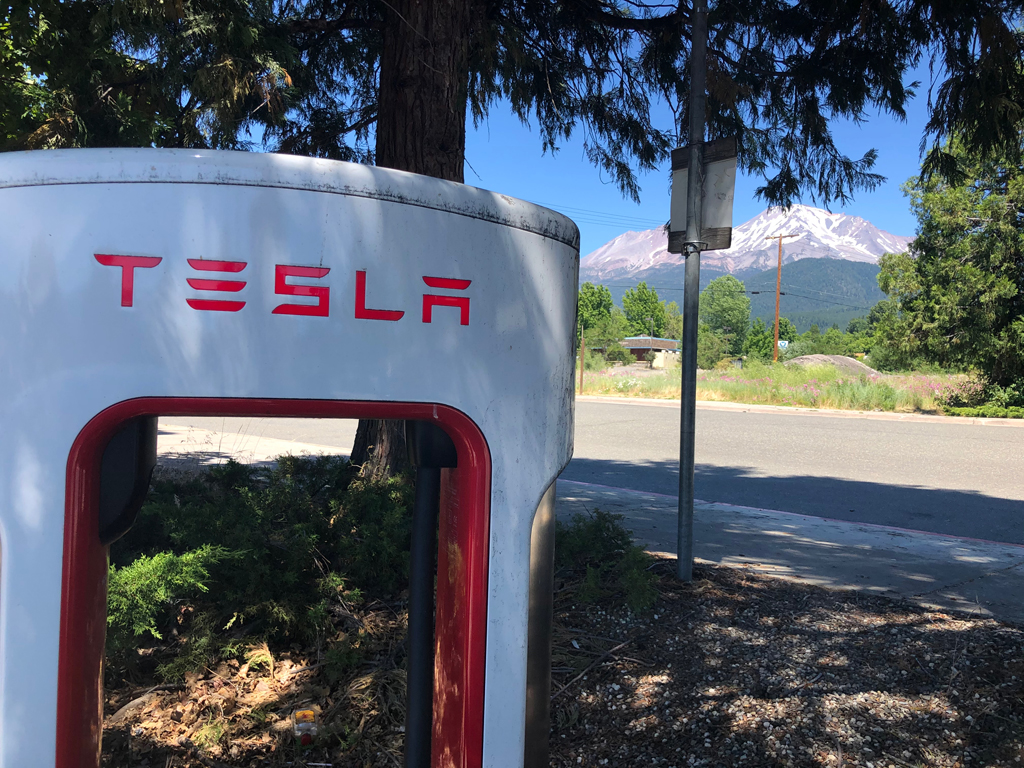
Under normal circumstances we’d have gotten some lunch or a bite to eat at a restaurant or cafe near a Supercharger. But because of the coronavirus we brought along prepared lunches, found some shade at one of the Superchargers and ate outdoors.
Driving stats for the drive to Crater Lake: Started with 263 miles of range, drove 354 miles; driving time 6h 45m; Supercharging time 54 minutes; we arrived in the park with 144 miles of range in the pack; $22.22 for Supercharging.
Destination Charging: We drove 200 miles while in the park to visit the sites and to hike on trails around the crater. The charging station near Annie Creek Restaurant served our needs for these outings. One or two hours of charging each evening was all we needed for daily trips – about 50 miles per day.
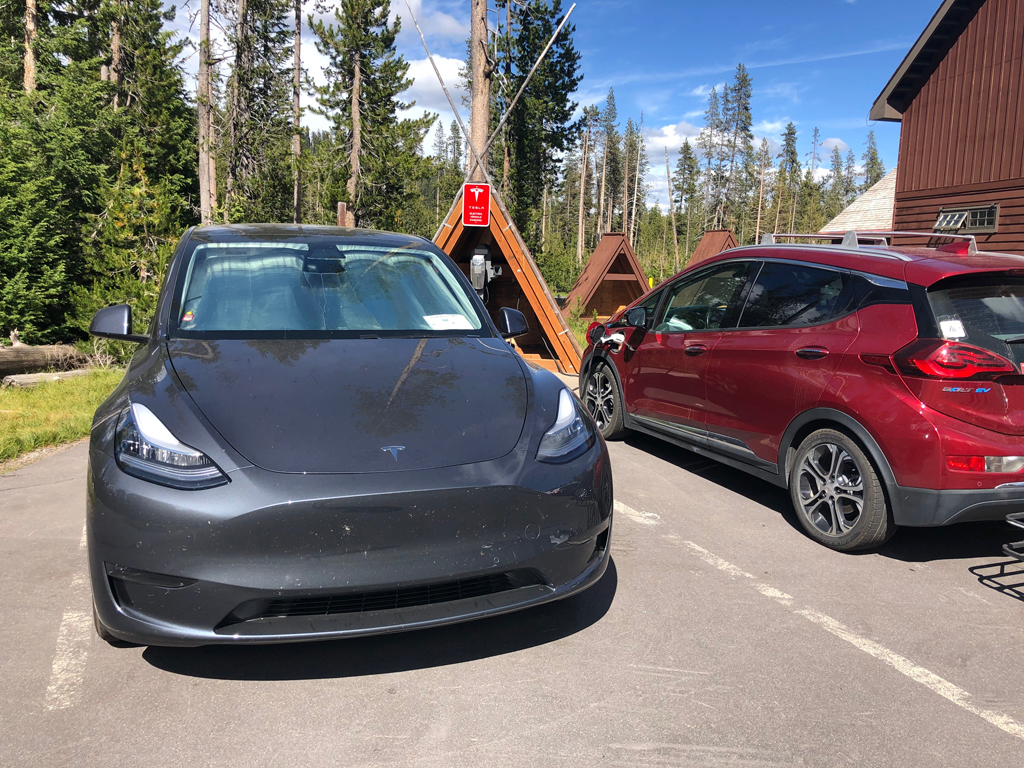
We had other charging options if needed: I could have used our Mobile Connector on the 120V outlet outside our cabin. I also brought along adapters for charging on RV hookups in the campground if needed. And of course we’d have asked for permission and paid any fees (read more about charging your EV on an RV hookup).
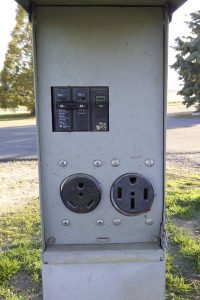
Crater Lake National Park. What can I say, Crater Lake and surrounding sites throughout the park are amazing. Highlights included the Cleetwood Cove trail down to the lake, Pinnacles, the Rim Trail, and every single view of Crater Lake. We’d been wanting to make this trip for a while, but it was also a great way to cool down. We left behind the 100+ temps in California’s Central Valley and found snow around Crater Lake in the middle of July.
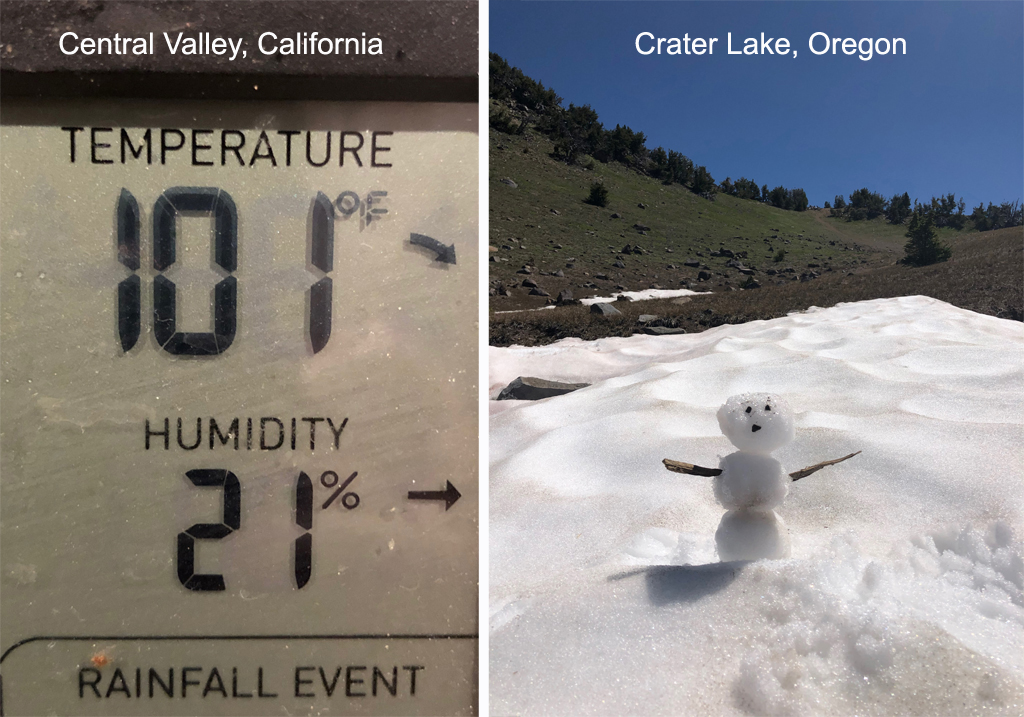
There is plenty to do around the park with hiking trails along the rim of the crater, along creeks, past water falls, steam fossils (Pinnacles), and lots more.
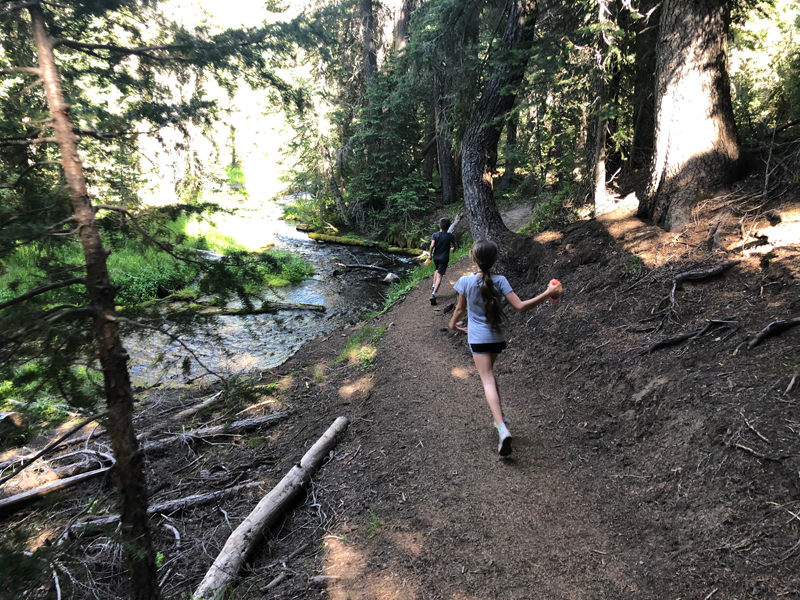
The drive around the crater is spectacular and each view seems better than the last. The color of the lake includes vibrant shades of blue that I haven’t seen before.
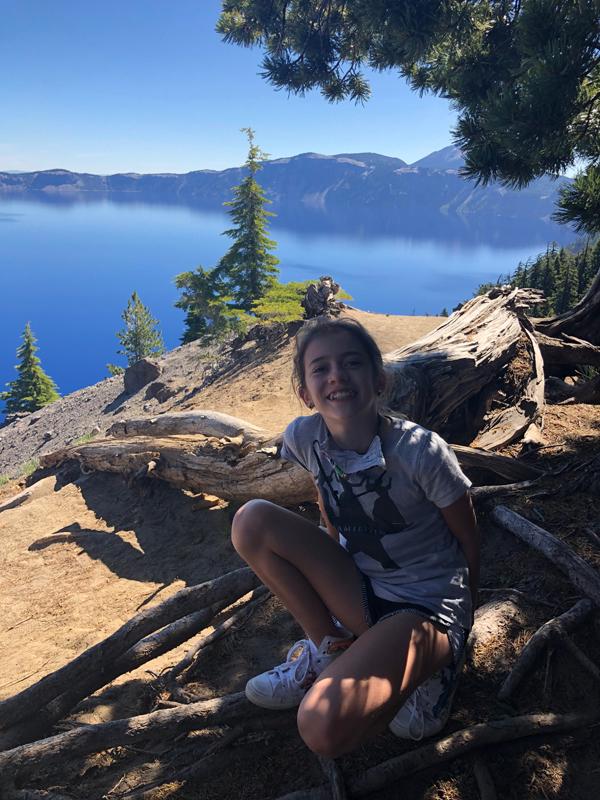
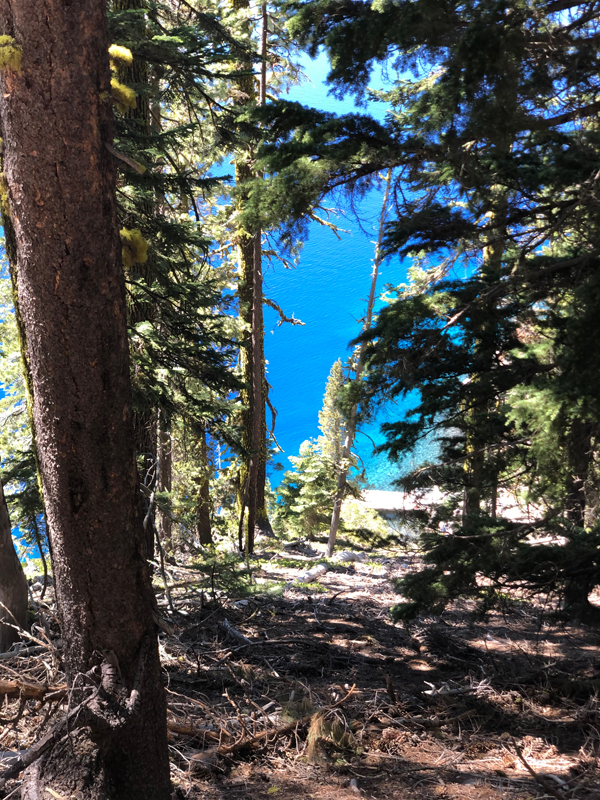
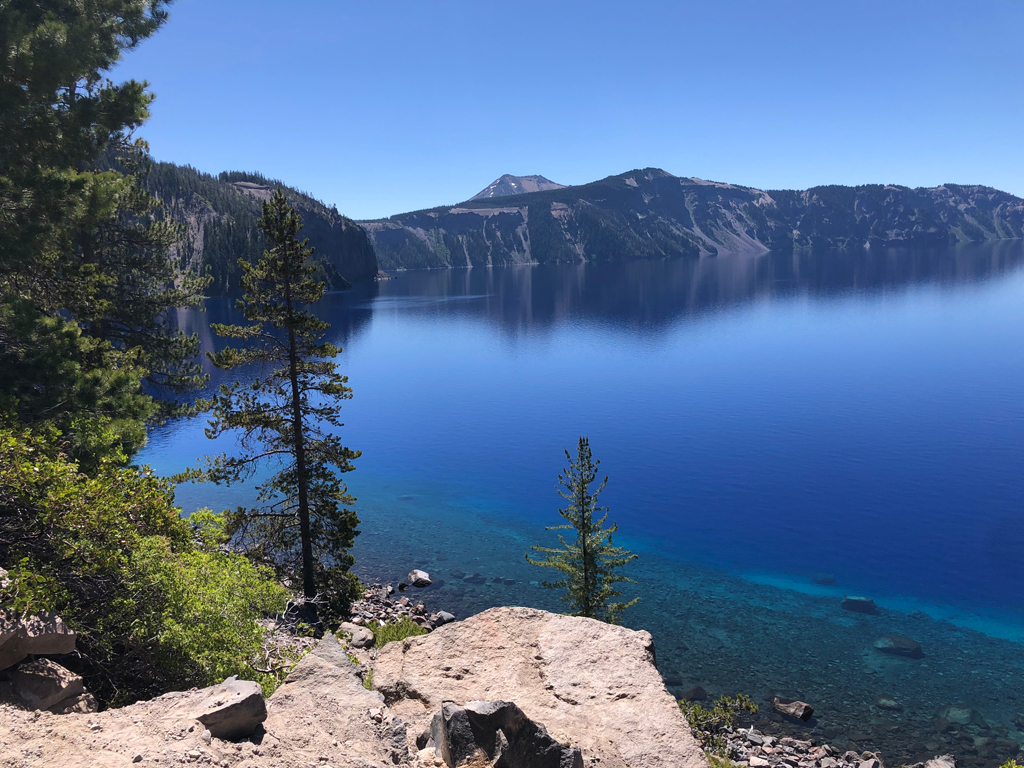
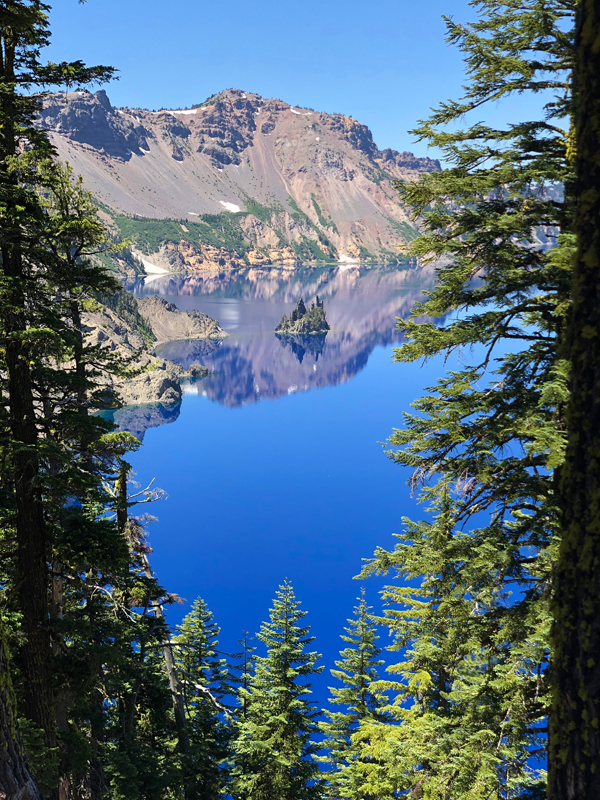
The Trip Home. We started with 267 miles in the pack, descended 6000 feet, stopped once to charge for half an hour, and then drove the last 100+ miles home.
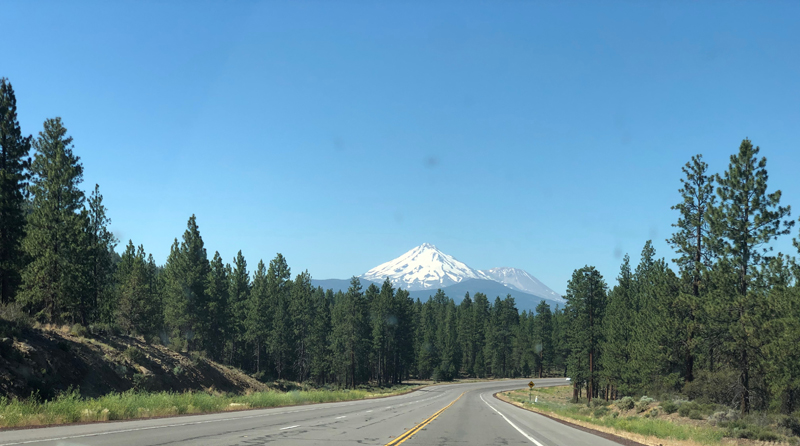
Driving stats for the trip home: Started with 267 miles of range, stopped once after driving 242 miles to the Corning Supercharger; arrived in Corning with 55 miles of range; Supercharging time 32 minutes; arrived home with 53 miles in the pack. Total miles 349; driving time 6h 15m; $8.40 for Supercharging.
Efficiency
- Trip to Crater Lake, 354 miles, 6000 ft ascent: 298 Wh/Mile.
- In the park, 200 miles on 35 mph roads: 200 Wh/Mile.
- Trip home: 349 miles, 6000 ft descent: 225 Wh/Mile.
- Total trip efficiency = 247 Wh/Mile.
- 78% highway miles (703 miles) / 22% @ 35 mph in the park (200 miles).
247 Wh/Mile is close to rated range for the Model Y and maybe would get me close to the advertised range of 316 miles. BUT, I drive slow and usually keep to the right lane. I think that 280+ Wh/mile and about 280 miles of range may be more realistic estimates for the average driver in the dual motor, long-range Model Y.
Total kWh Usage Compared to Gas: In terms of total energy usage, the car reported using 223 kWh. 111 came from Superchargers, the remaining 112 from the wall. Assuming 85% efficiency for Level 2 charging and 95% efficiency for Supercharging that rounds up to 250 kWh sent to the car from the wall and from Superchargers for this trip of 903 miles. One gallon of gas has the same amount of energy as 33.7 kWh of electricity, so 250 kWh has the same amount of energy as 7.4 gallons of gas. Consuming the equivalent amount energy stored in 7.4 gallons of gas over 903 miles = 121 eMPG. But like I said, I drive slow. Faster driving should still get you 90 – 100 eMPG.
Emissions Produced by Charging: When talking eMPGs, the source of electricity is really the important consideration. Looking at average emissions from generating electricity in California and Oregon (available here from the US Energy Information Agency) we can calculate emissions produced by charging the Model Y on this trip. I got 164 kWh from charging in California and 86 kWh in Oregon. California releases – on average – 0.491 lbs of CO2 per kWh generated, in Oregon that figure is 0.302 lbs CO2 per kWh. Doing the math, 80 lbs of CO2 were released from charging in California and 26 lbs of CO2 were released from charging in Oregon. So a total of 106 pounds of CO2 were released for this 903 mile electric road trip. How does that compare to gasoline? Each gallon of gas releases 19.6 lbs of CO2 when burned. The 106 pounds of CO2 released by charging our Model Y on this trip is equivalent to the amount of CO2 that would be released by burning 5.4 gallons of gas. Using that figure (5.4 gallons of gas per 903 miles) our Model Y produced the emissions of a hypothetical gas-burning car that gets 167 MPG. Driving electric is much cleaner than gas. (Read here about emissions from driving electric through states that generate a significant amount of electricity from burning coal).
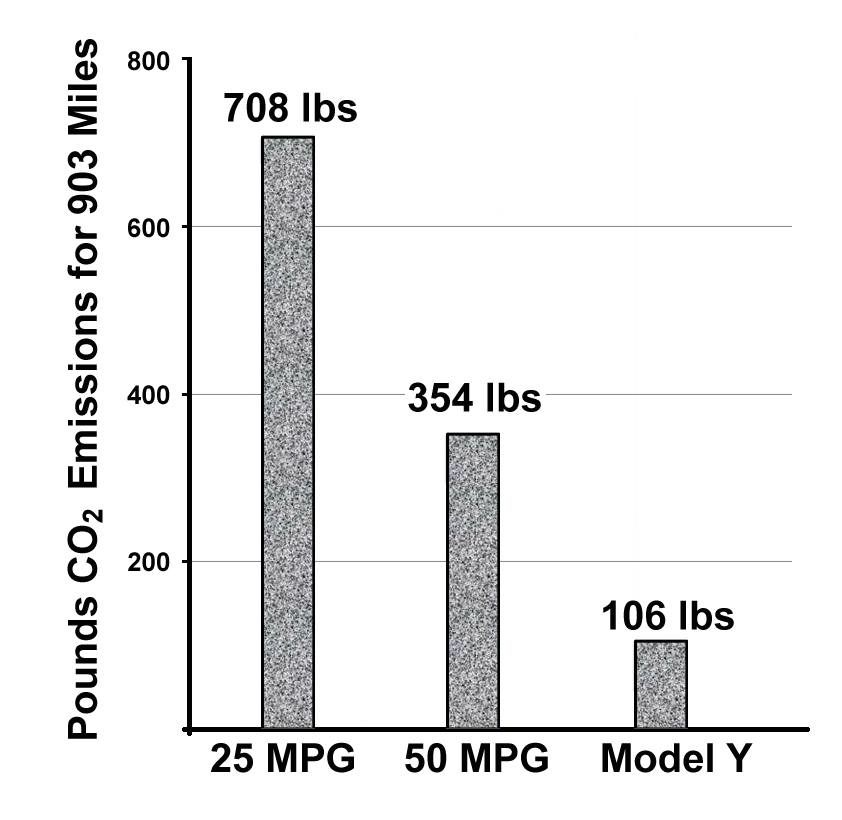
Comparison to our Model 3 and Rav4 EV. The cabin and driver controls are pretty much identical to those in the Model 3. But the car itself and the driver’s seat are higher and easier on the knees getting in and out. And of course the Model Y has lots more storage space than the Model 3. The Model Y replaced our 7 year old Rav4 EV. The rear storage space in the 2012 Rav4 EV is wider (44″ at the door and between the wheels, versus 37″ at the door and between the wheels in the Y); and taller (37″ at the hatch opening versus 27″ in the Y). But the Model Y rear storage is a bit deeper (43″ from the base of the rear seats to the hatch versus 36″ from the back seats to the hatch in the Rav4 EV). And the Model Y has a larger storage compartment under the rear floor, and the frunk up front for storing smaller items. The storage space in our Rav4 EV was more rectangular and was easier to pack since it doesn’t have a sloping hatch. But, all in all the Model Y has enough storage space for our family trips.
Summary: For those who haven’t yet made the switch to driving electric, the Model Y is yet another option on the market. The Model Y is comfortable for daily driving, has the storage space to meet (most of) your needs, and the range and international charging network to take you many of the places you’d like to go.
Covid: Supercharging is safe. Bring hand sanitizer if you have any concerns about handling the public charging plugs, and it’s easy to keep to yourself while charging. We managed to reserve a cabin in the park, and brought along our own food and drinks so we could eat in our room and keep to ourselves. Each day we went hiking on trails around the park that were wide enough for hikers and families to observe social distancing. So with us being outdoors, maintaining distance, and wearing face masks, we felt safe that we weren’t exposing other folks to anything we might unknowingly carry along with us, and vice versa. We’re in this together folks, let’s keep safe out there.

